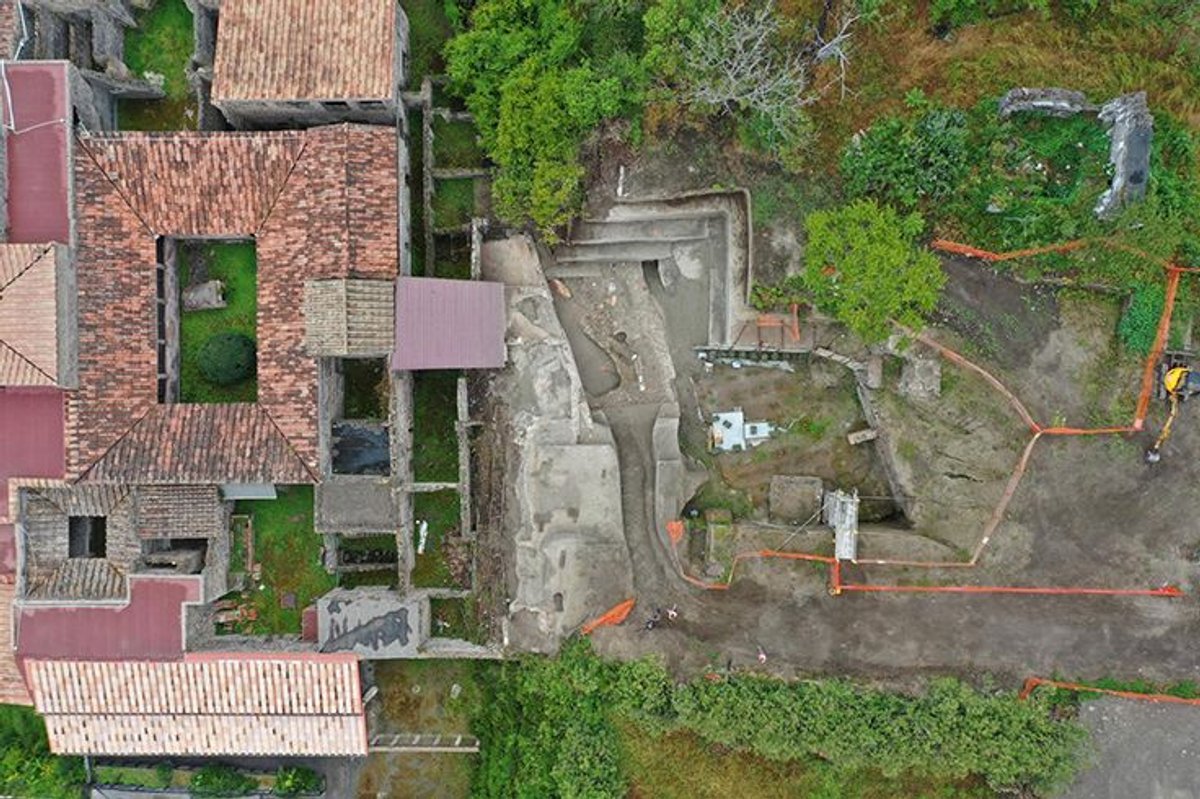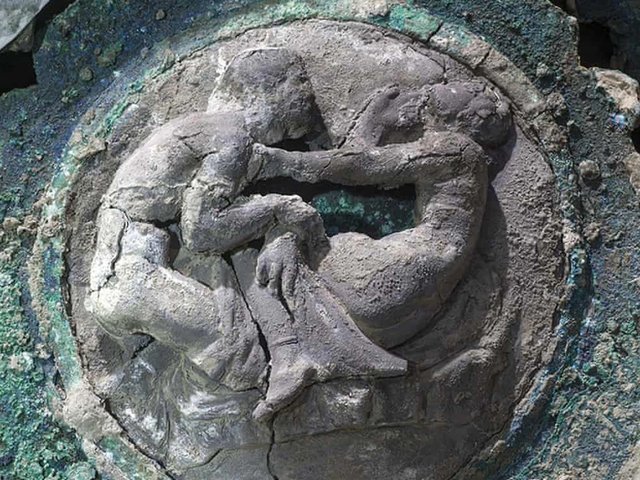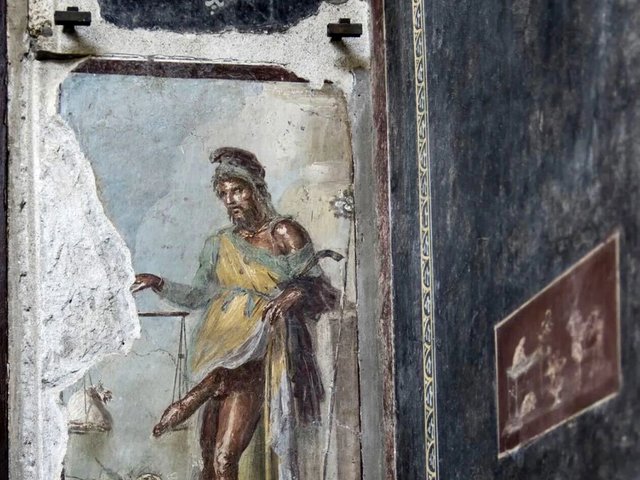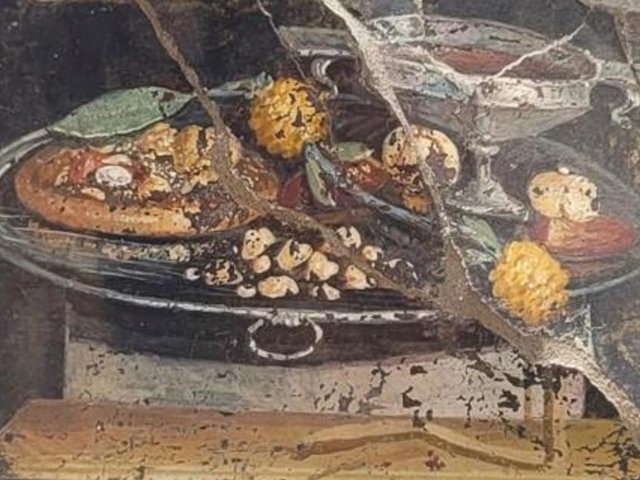On a map, Pompeii’s Villa of the Mysteries looks like an afterthought—a small, distant square, as far away as possible from the ancient city’s amphitheatre, where the action was. But the suburban villa, which dates to the second century BC, is the red-hot centre for many who make the pilgrimage here. Its room of celebrated frescoes contains some of the best-known and best-preserved examples of Ancient Roman art. And its palatial sprawl of 3,700 sq. m is vivid proof of the good life available to Pompeii’s upper crust—until that fateful day in AD79 when Mount Vesuvius erupted.
Though largely excavated in two separate episodes, first starting in 1909 and then again in the late 1920s, a small portion of the villa has remained buried. Until now.
Around 10% of the Villa of the Mysteries had been unavailable to archaeologists, says Gabriel Zuchtriegel, the director of the Archaeological Park of Pompeii, because of a private farmhouse that abutted the site. The park finally acquired the home in 2023, and, following its demolition, work began, but only up to a point. Though around four million people visit the site annually—on a par, as it happens, with Florence’s Uffizi Galleries, the country’s most visited museum complex—extra funding is still needed to undertake major digs like this one, Zuchtriegel says. In response, the park is in the midst of a funding drive for €1.4m to finance the dig, with the closing date set for this month. If the money arrives as planned, Zuchtriegel says, “we could start in early 2026”.
Among what remains to be excavated, according to the German-born archaeologist, are the servants’ quarters, which would have been largely reserved for the enslaved and a certain number of liberti, or freed slaves, who stayed on as lowly employees.
Will they discover new frescoes?
The big question when it comes to new discoveries at the villa is, of course, can archaeologists expect to find any new frescoes? Zuchtriegel is hopeful but suggests they might be something of a diversion from the dig’s larger purpose.
“There could be frescoes,” he says. But he is quick to invoke what he calls the “deeper bias” of classical archaeology, which was often interested, to a fault, in “great artworks and beautiful architecture belonging to elite culture”. They are important to study, he says, but finding out more about how ordinary labourers lived also has great importance. We must know the wider “context” of the villa’s famous and beautiful frescoes, he argues, in order to grasp “the world view of the society that produced them”.
Parts ofthe villa unaffected by the excavations can be visited while the dig is ongoing, at a time when Pompeii’s park has often become overcrowded, leading to bottlenecks at its main entrances, and manifold complaints on social media from disappointed tourists.
In November 2024, Pompeii began to place a well-publicised cap on the number of daily visitors at 20,000. But Zuchtriegel, speaking in September, revealed that the park has only actually reached that number less than ten times this year. “We are still increasing our numbers,” he says.





